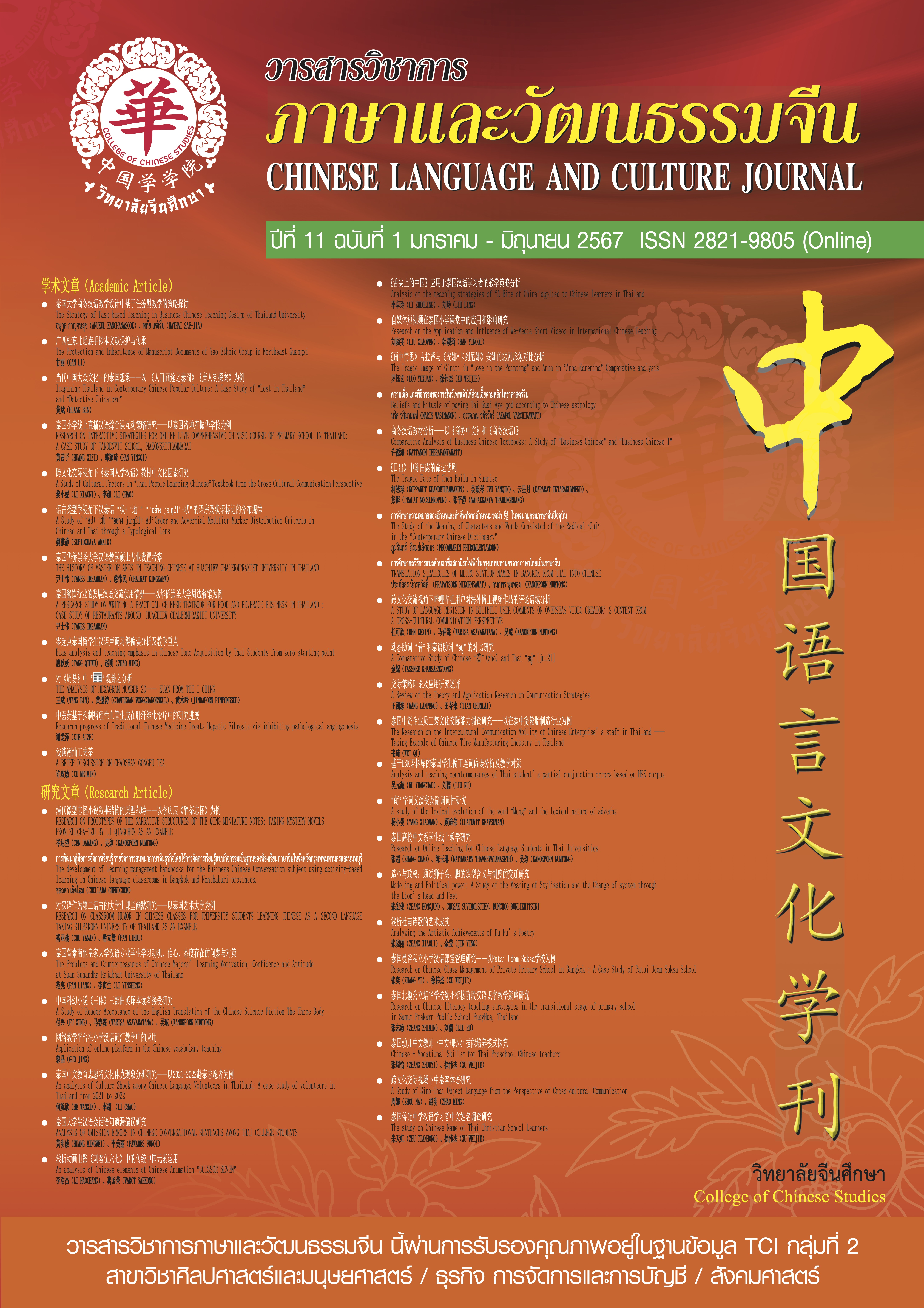THE ANALYSIS OF HEXAGRAM NUMBER 20 —— KUAN FROM THE I CHING
Keywords:
Kuan Hexagram, I Ching, Philosophical IdeasAbstract
This article delves into an in-depth analysis of hexagram number 20 —— Kuan (Contemplation) from the I Ching, discussing its symbolic meanings, philosophical ideas, and interpretations and applications in different historical periods. Formed by the combination of the Sun (Wind) and Kun (Earth) trigrams, Kuan symbolizes "wind over the earth," metaphorically representing the processes of observation and enlightenment. Through the interpretation of the hexagram (Gua)'s text and horizontal lines (Yao), this study reveals the profound implications of Kuan in education and moral cultivation, emphasizing the significance of observation and cognition in personal development and social governance. The article also compares the definition of Kuan (Contemplation) in contemporary literature from the same period as I Ching, as well as the research of modern scholars, demonstrating the evolution of Kuan's meaning and the diversity of understanding across eras. The recognition and interpretation of Kuan in modern literature, especially in the fields of religion, philosophy, and aesthetics, offer new insights into the contemporary value of Kuan. The findings of this study not only provide a fresh perspective on the academic study of I Ching , but also offer valuable implications for the modern transformation and application of traditional culture.
References
陈 碧:《周易》“观”的哲学内涵及美学意义,武汉理工大学学报(社会科学版),2009.6:133-134
陈 坚:“观”: 从《周易》到佛教,《周易研究》,2013,3(119):48
程 颢,程颐:《二程集》.[M].中华书局,1981.798
[清] 段玉裁·注:《说文解字注》.[M].上海古籍出版社,1981.731
金景芳、吕绍刚.周易全解.[M].吉林:吉林大学出版社,1989.171-172
蒋丽梅:王弼《观》卦释义研究,杭州师范大学学报[社会科学版],2016. 3,2:14
冀志强:论“观”在《周易》哲学中的建构,兰州学刊,2011.9:33-38
林孝斌:《周易》观卦中“观”的感通认识论意涵解析,周易研究,2020,5:44
[清] 李光地.周易折中.[M].北京:九州出版社,2002.179-185
[魏] 王弼注,[唐]孔颖达疏,卢光明、李申整理,卢绍刚审定《周易正义》(十三经注疏),十三经注疏整理委员会.[M].北京:北京大学出版社,2000.114-118
[明] 王夫之.周易内传.[M].长沙:岳麓书社,1988.201-202
王振复.周易精读.[M].上海:复旦大学出版社,2008.134
王立杰:“观”的文学人类学研究,宜宾学院学报,2013.5,13(5):83
王在华:《易经》观卦新释,《中外企业家》,2010,1:187
[汉] 许慎:《说文解字》.[M]. 北京:中华书局,1963.177
杨燕:《观》卦的祭祀内涵与儒家哲学的关系,《周易研究》,2010,1:55
宇克承编著:《易辞精蕴》.[M]. 台湾:青巨书局,1999.36
[汉] 郑康成著,[宋]王应麟辑,《郑氏周易注》.[M]. 北京:中华书局,1985.15
张文智:《观卦看《周易》中的“神道设教”观———兼论儒学的宗教性问题》,东南大学学报,2019.:38
朱 熹:《周易本义》.[M].北京:中华书局,2009.98
Downloads
Published
How to Cite
Issue
Section
License
Copyright (c) 2024 Chinese Language and Culture Journal

This work is licensed under a Creative Commons Attribution-NonCommercial-NoDerivatives 4.0 International License.
บทความที่ได้รับการตีพิมพ์เป็นลิขสิทธิ์ของวารสารภาษาและวัฒนธรรมจีน มหาวิทยาลัยหัวเฉียวเฉลิมพระเกียรติ
บทความใน “วารสารวิชาการภาษาและวัฒนธรรมจีน” เป็นทรรศนะของผู้เขียนโดยเฉพาะ กองบรรณาธิการไม่มีส่วนในความคิดเห็นในข้อเขียนเหล่านั้น




